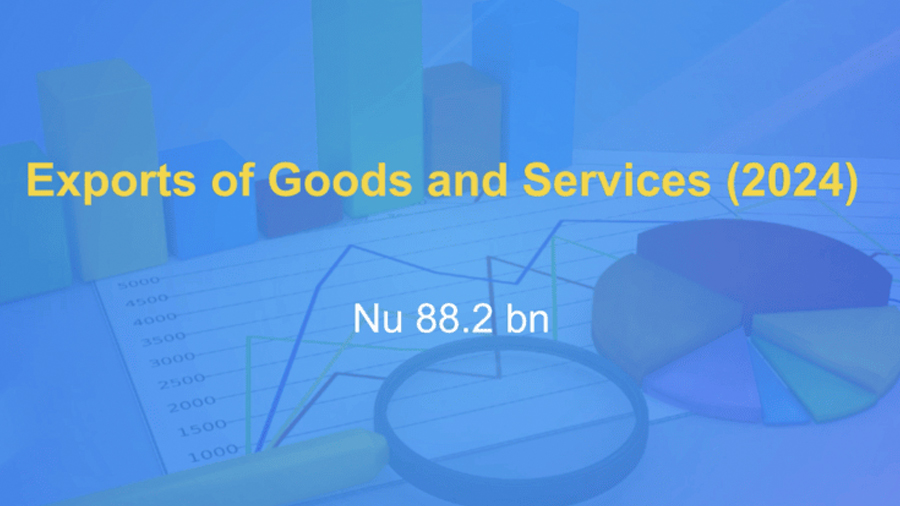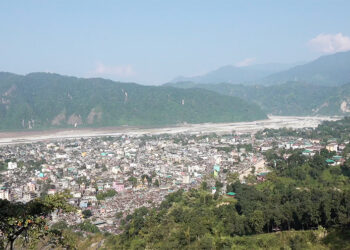 Bhutan’s economy showed encouraging signs of improvement last year, with the country recording a smaller trade deficit than the previous year. This is according to the National Accounts Statistics 2025. The trade gap, the difference between what the country imports and exports, stood at just over Nu 45bn. While still substantial, this marks a significant improvement from 2023, when the deficit was Nu 62bn.
Bhutan’s economy showed encouraging signs of improvement last year, with the country recording a smaller trade deficit than the previous year. This is according to the National Accounts Statistics 2025. The trade gap, the difference between what the country imports and exports, stood at just over Nu 45bn. While still substantial, this marks a significant improvement from 2023, when the deficit was Nu 62bn.
This improvement was largely supported by a rise in the export of goods and services. Exports grew by over 19 per cent, with goods making up the bulk of the total. Hydropower, minerals, and agricultural produce continued to be key contributors.
The services sector, which includes tourism, transport, and information services also contributed to export earnings, though growth slowed sharply. After an exceptional surge in 2023, services exports grew at a more modest pace last year. Even so, they accounted for over 30 per cent of Bhutan’s total export income.
In total, Bhutan earned over Nu 88bn from the export of goods and services last year. This represented about 31 per cent of the country’s GDP, a slight increase from the previous year indicating growing contribution of trade to the national economy.
However, economists say it remains to be seen whether this improvement signals a long-term trend or is just a short-term development.
Sanjeev Mehta, a senior professor and economist said, ” I think we’ll have to wait for a few more years, at least two, three more years and see whether exports have really started to pick up over a longer period of time. The impact of this would definitely be on the foreign exchange reserves; Bhutan’s foreign exchange reserves would actually grow because of the lower trade deficit. So it would augment foreign exchange reserves. Definitely would be an advantage in terms of Bhutan because the country would have more resources to spend on capital goods now.”
Despite this progress, imports remained high. Bhutan brought in goods and services worth over Nu 134bn, a slight increase from the previous year. Goods accounted for the majority of imports. However, the import of services such as education and professional consulting dropped significantly.
According to the Bhutan Trade Statistics 2024, the top commodities that the country imported were diesel, petrol, rice, coke and smartphones among others. Meanwhile, Bhutan’s top export commodities were silicon, boulders, ferro-silicon-manganese and postage stamps and related paper products and, dolomite chips among others.
Samten Dolkar
Edited by Kipchu







